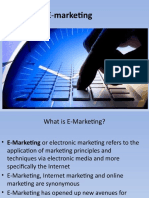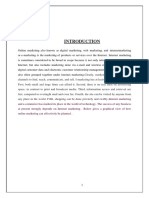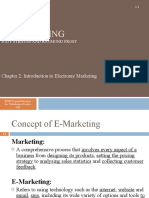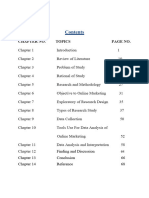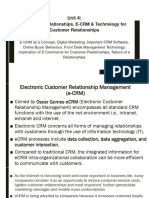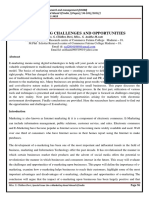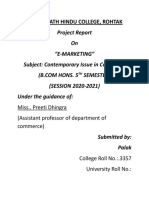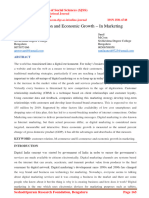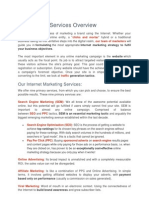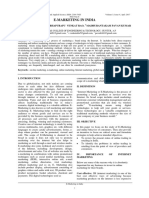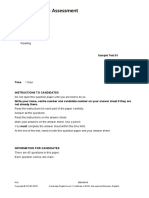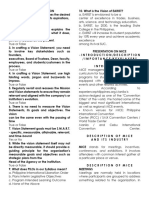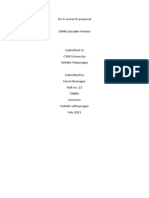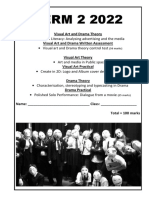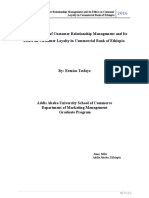0% found this document useful (0 votes)
60 views14 pagesReport On Unix
The document discusses e-marketing and customer relationship management (CRM). It defines e-marketing as marketing conducted over the internet, highlighting advantages like lower costs and global reach. CRM is described as managing relationships with customers throughout their journey with a brand. Key strategies of each are explored, including social media marketing, content marketing, search engine optimization, and email marketing for e-marketing and collecting customer data and personalizing interactions for CRM.
Uploaded by
rudrendughosh2001Copyright
© © All Rights Reserved
We take content rights seriously. If you suspect this is your content, claim it here.
Available Formats
Download as PDF, TXT or read online on Scribd
0% found this document useful (0 votes)
60 views14 pagesReport On Unix
The document discusses e-marketing and customer relationship management (CRM). It defines e-marketing as marketing conducted over the internet, highlighting advantages like lower costs and global reach. CRM is described as managing relationships with customers throughout their journey with a brand. Key strategies of each are explored, including social media marketing, content marketing, search engine optimization, and email marketing for e-marketing and collecting customer data and personalizing interactions for CRM.
Uploaded by
rudrendughosh2001Copyright
© © All Rights Reserved
We take content rights seriously. If you suspect this is your content, claim it here.
Available Formats
Download as PDF, TXT or read online on Scribd
/ 14

